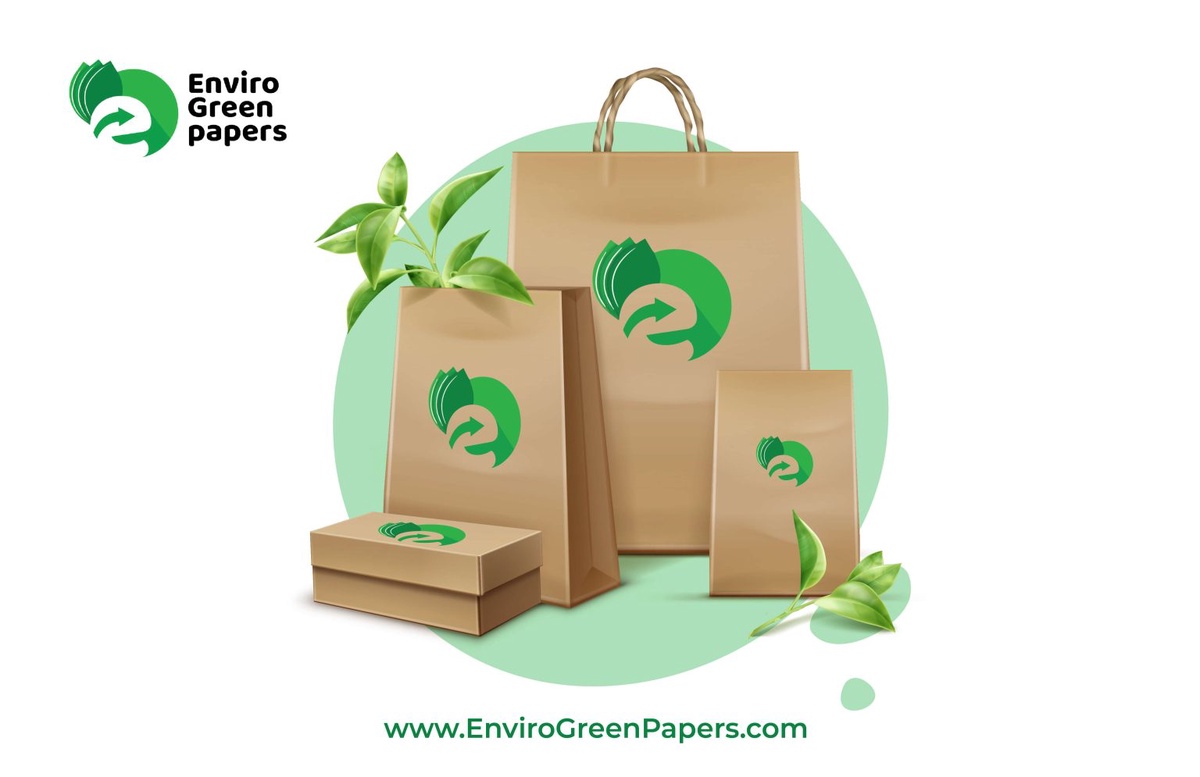In today’s environmentally conscious world, paper bags have gained popularity as an alternative to plastic bags due to their eco-friendly nature. However, it is essential to understand the water-resistance capabilities of paper bags to ensure they can adequately protect their contents in various conditions.
Enviro Green Papers is a prominent and environmentally conscious paper bag manufacturer in India. With a strong commitment to sustainability, quality, and innovation, the company has gained recognition as one of the best paper bag manufacturers in the country. This introduction aims to provide an overview of Enviro Green Papers mission, values, and their position as a top player in the Indian market.
Paper bags, made primarily from wood pulp fibers, offer a sustainable solution for packaging needs. They are renewable, recyclable, and biodegradable, making them a preferable choice for those concerned about the environmental impact of plastic bags. Nonetheless, the water resistance of paper bags is a critical factor to consider, as exposure to moisture can compromise their functionality.
The Composition of Paper Bags
To comprehend the water resistance of paper bags, we must first delve into their composition. Paper bags are crafted from wood pulp fibers that undergo a complex process to transform them into the sturdy paper sheets we are familiar with. These fibers are generally derived from sustainable sources such as responsibly managed forests or recycled paper.
Water Resistance vs. Water Repellency
Before assessing the water resistance of paper bags, it is essential to distinguish between water resistance and water repellency. Water resistance refers to a material’s ability to withstand water penetration, while water repellency relates to its ability to repel water without absorption. These properties are influenced by several factors, including the material’s composition and surface characteristics.
The Water-Resistance of Paper Bags
In their natural state, paper, and paper bags are susceptible to moisture. The porous nature of the article allows water molecules to infiltrate and potentially damage the contents within. However, through specialized manufacturing techniques, paper bags can be made more water-resistant. These techniques involve modifying the fibers and incorporating additives during manufacturing to enhance the bag’s resistance to water.
The Role of Coatings and Laminations
Manufacturers often employ coatings and laminations to bolster paper bags’ water resistance further. Coatings can be applied to the paper’s surface, creating a barrier preventing water from seeping. Laminations involve adding layers, often made of plastic or wax, to the paper surface to provide an extra shield against moisture. These techniques help improve the water resistance of paper bags, but they also raise concerns about their environmental impact and recyclability.
Biodegradability and Sustainability of Paper Bags
One of the critical advantages of paper bags is their biodegradability. Paper bags can break down naturally over time when properly disposed of, minimizing their environmental impact. This starkly contrasts plastic bags, which can persist in landfills for hundreds of years. However, using coatings and laminations can impede the biodegradability of paper bags, and careful consideration is necessary to strike a balance between water resistance and environmental sustainability.
Applications and Limitations of Water-Resistant Paper Bags
Water-resistant paper bags find utility in various applications. They are commonly used in grocery stores, bakeries, and take-out establishments to package items that may come into contact with moisture, such as fruits, vegetables, and prepared meals. However, it is crucial to recognize that paper bags’ water resistance has limitations. Prolonged exposure to water or extreme humidity can compromise their effectiveness, necessitating alternative packaging solutions for highly sensitive or perishable items.
Conclusion
Paper bags offer a greener alternative to plastic bags, but their water-resistance capabilities play a significant role in their functionality. Through manufacturing techniques, coatings, and laminations, paper bags can be made more water-resistant, protecting their contents under normal conditions. However, it is essential to balance water resistance and environmental sustainability to ensure the continued ecological benefits of paper bags.
FAQs
Can paper bags protect items from heavy rain?
While paper bags are designed to be water-resistant, prolonged exposure to heavy rain may compromise their effectiveness. It is advisable to take additional precautions, such as using an umbrella or placing the paper bag inside a waterproof container.
Are all paper bags water-resistant?
Not all paper bags are inherently water-resistant. Some may require additional coatings or laminations to enhance their water-resistance capabilities. Checking the specifications or inquiring with the manufacturer before assuming a paper bag is water-resistant.
Can water-resistant paper bags be recycled?
The recyclability of water-resistant paper bags depends on the specific type of coating or lamination used. Some layers may render the paper bag less recyclable, while others can be separated during recycling. Following local recycling guidelines and consult with waste management authorities for proper disposal is essential.
Do water-resistant paper bags cost more than regular paper bags?
Water-resistant paper bags may be slightly more expensive than regular paper bags due to the different manufacturing processes involved. However, the price difference is usually minimal and outweighed by the environmental benefits and increased functionality they offer.
Are there alternatives to water-resistant paper bags for susceptible items?
There are alternative packaging solutions available for highly sensitive or perishable items. For instance, utilizing plastic bags or containers with tight-sealing lids may provide better protection against moisture. It is essential to consider the specific requirements of the packaged items and choose the most appropriate option.


No comments yet